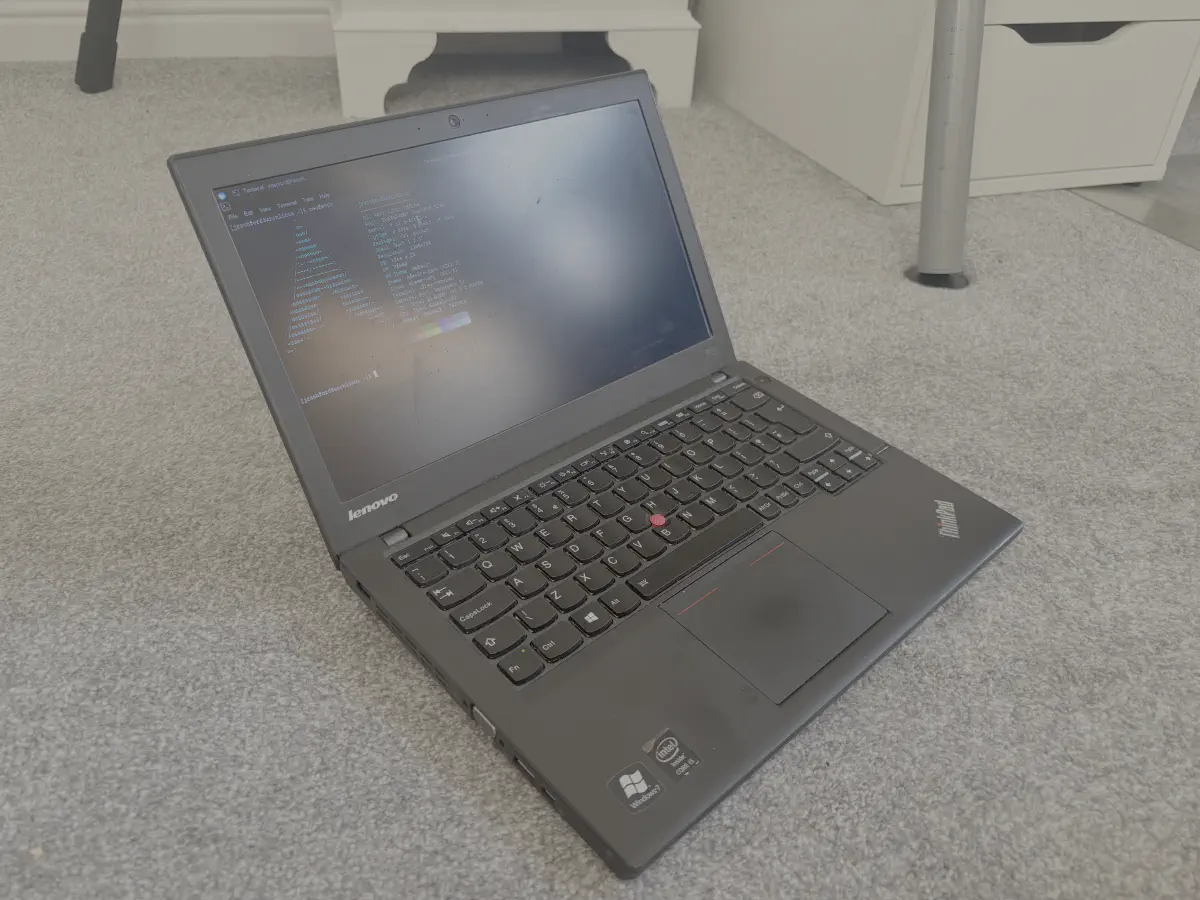Honest Review of ThinkPad X240
Tags: Arch ThinkPad X240 Linux

I’m a huge Apple fanboy. There is very little you can do to persuade me to use another device for my daily and work driver. I love how all my Apple devices work seamlessly together under the Apple ecosystem.
That being said, as great as Apple are, they certainly are not perfect. Macs often lack user-upgradeable or repairable components, with soldered RAM and SSDs, making longevity and customisation difficult. Their keyboard designs, especially the controversial butterfly switches, have faced reliability issues. Ports are limited, often requiring dongles for connectivity, whereas ThinkPads offer a wider variety, including legacy options. Thermal management in Macs, particularly in thinner models, can lead to overheating and throttling. Additionally, ThinkPads generally have superior keyboard ergonomics, better durability (meeting MIL-STD standards), and a broader range of models catering to enterprise needs.
Buying the ThinkPad
With this in mind, I purchased an X240 on eBay for £120. It included an expanded battery pack, an Intel i5-4300 @ 2.9 GHz CPU, 16GB RAM, 128GB SSD, and a docking station. I bought it with the intention of learning more about Linux and potentially exploring ethical hacking. Essentially, it’s a sandbox experimental laptop.
The ThinkPad X240 was released in late 2013 as part of Lenovo’s X-series ultraportable business laptops. It featured a 12.5-inch display, available in HD (1366x768) or Full HD (1920x1080) with an optional IPS panel for better viewing angles. Powered by Intel’s 4th-generation Haswell processors, it offered improved battery efficiency, and with Lenovo’s Power Bridge technology, users could swap external batteries without shutting down. The X240 included up to 8GB of RAM and an SSD or HDD for storage. Its classic ThinkPad keyboard was backlit and spill-resistant, though the trackpad design was controversial, as it replaced physical buttons with a clickpad. It also featured a variety of ports, including USB 3.0, VGA, Mini DisplayPort, and an SD card reader, making it highly versatile for business users.
The X240 Hate
Now, as any user on r/Thinkpad (a subreddit dedicated to all things ThinkPad) will tell you, the ThinkPad X240 gets a lot of hate. But is it really that bad?
I’ve had my X240 for some time now (three years or so), and I can definitely confirm that the trackpad is not great—something which is mentioned a lot for this particular model. But the good news is that you can replace it—something you would struggle to do on a Mac. That being said, I still haven’t got around to changing the trackpad.
Using the X240
Overall, I do enjoy using my X240. Is it good enough to replace my daily driver? Absolutely not. It certainly wouldn’t compete with the work that I do.
I mainly use it for casual web surfing, word processing (writing blog posts, sermons, and Bible studies, using LibreOffice mainly), coding, and some light web development.
Given its compact size, I often prefer to take it over my personal MacBook Pro whenever I go travelling. I can still do most of what I would on the X240, making it a great lightweight substitute for casual tasks.
Linux Distros
As for my choice of OS, I couldn’t be happier to scrap Windows off the system and replace it with Linux. I have tried a whole bunch of different Linux distros, including Manjaro, Ubuntu, Linux Mint, and Debian, before eventually settling with Arch paired with the XFCE desktop environment. Yes, I’m a convert to the church of Arch now, which means that after installing it on my own machine (with some help from the install script), I get bragging rights for life.
Final Thoughts
I’ve really enjoyed using the X240 (apart from the touchpad issues). With it, I have learnt an awful lot about Linux and how it works. It’s great as an experimental machine. I’ll repeat: it’s great as an experimental machine, but not much else.
If you want to replace your daily driver with a ThinkPad, I’d recommend choosing something a lot beefier, such as the ThinkPad P Series. These mobile workstations are known for their high-performance capabilities and compatibility with Linux operating systems. Additionally, the ThinkPad X1 Extreme offers powerful specifications in a lighter form factor—an excellent choice for Linux nerds like myself.